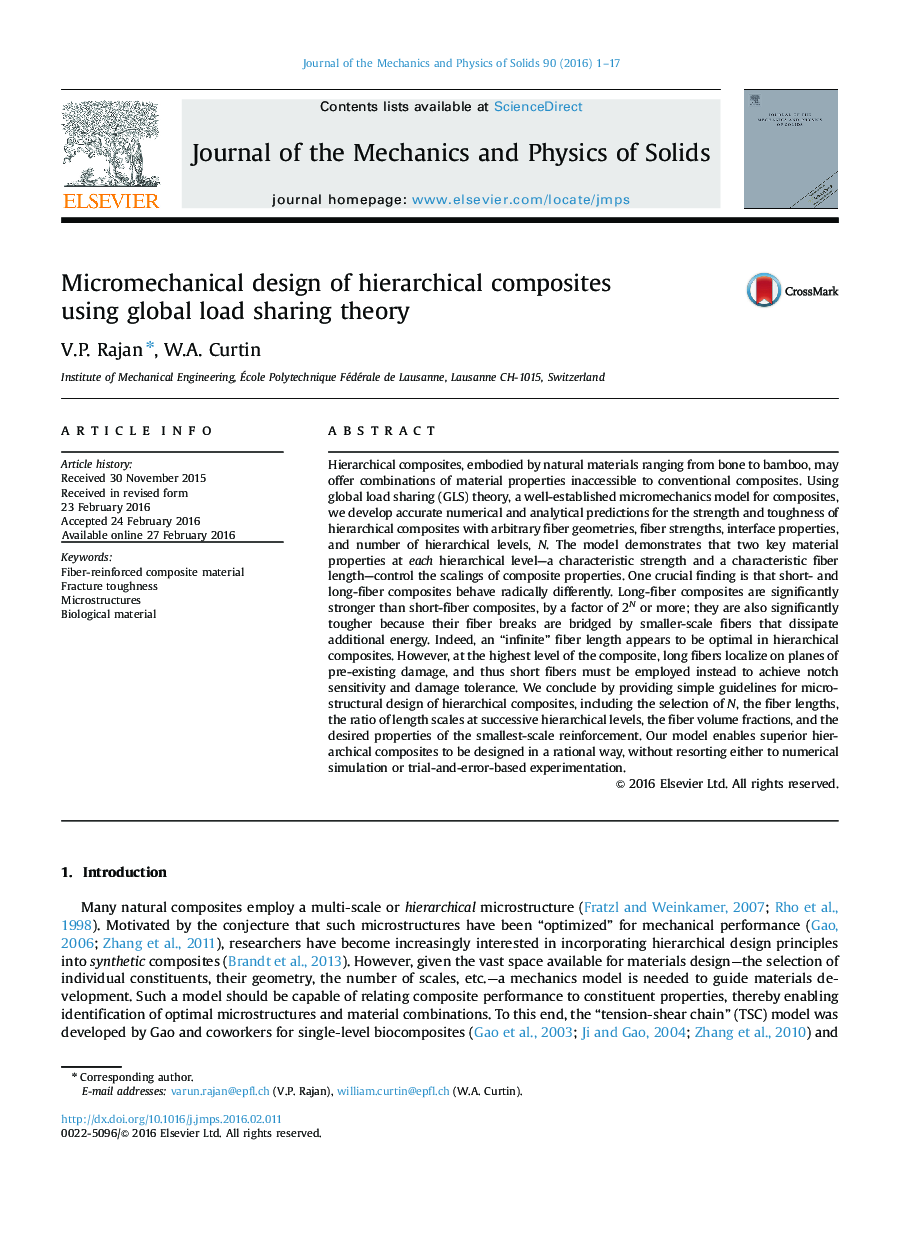| Article ID | Journal | Published Year | Pages | File Type |
|---|---|---|---|---|
| 797772 | Journal of the Mechanics and Physics of Solids | 2016 | 17 Pages |
•New micromechanics model for hierarchical composites based on global load sharing.•Accurate analytical solution that enables easy prediction of composite properties.•Development of guidelines for microstructural design of hierarchical composites.•Identification of roles of long and short fibers in promoting robust performance.
Hierarchical composites, embodied by natural materials ranging from bone to bamboo, may offer combinations of material properties inaccessible to conventional composites. Using global load sharing (GLS) theory, a well-established micromechanics model for composites, we develop accurate numerical and analytical predictions for the strength and toughness of hierarchical composites with arbitrary fiber geometries, fiber strengths, interface properties, and number of hierarchical levels, N. The model demonstrates that two key material properties at each hierarchical level—a characteristic strength and a characteristic fiber length—control the scalings of composite properties. One crucial finding is that short- and long-fiber composites behave radically differently. Long-fiber composites are significantly stronger than short-fiber composites, by a factor of 2N or more; they are also significantly tougher because their fiber breaks are bridged by smaller-scale fibers that dissipate additional energy. Indeed, an “infinite” fiber length appears to be optimal in hierarchical composites. However, at the highest level of the composite, long fibers localize on planes of pre-existing damage, and thus short fibers must be employed instead to achieve notch sensitivity and damage tolerance. We conclude by providing simple guidelines for microstructural design of hierarchical composites, including the selection of N, the fiber lengths, the ratio of length scales at successive hierarchical levels, the fiber volume fractions, and the desired properties of the smallest-scale reinforcement. Our model enables superior hierarchical composites to be designed in a rational way, without resorting either to numerical simulation or trial-and-error-based experimentation.
